One of the most effective ways to remove paint from metal is to use a special chemical preparation. Washing itself does not remove the coating, it softens the coating, after which it is enough to walk the surface with a spatula to remove any paint residue. In this case, the flushing composition does not harm the base, affecting only the paintwork.
- Varieties of washes
- Principle of action and composition
- Material consumption
- Surface treatment instructions
- Examples of metal washes
- Aerosol wash "Abro PR-600"
- Flushing SP-7
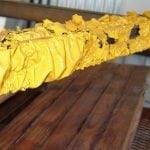
Varieties of washes
There are several types of washing fluids that are classified according to the specifics of their application:
- Preparations for the removal of water emulsion and oil paints.
- Universal washes designed to eliminate any coatings on all types of materials.
- Compositions for removing powder coatings.
- Express washes, characterized by speed.
- Washing compositions for metal.
You can remove paint from a metal surface not only with a specialized composition, but also with a universal one, as well as with an express wash. When it comes to powder coating, you will also need the appropriate type of wash.
to contents ↑Principle of action and composition
As a result of washing, softening and peeling of the paint occurs due to the deterioration of its adhesive characteristics. In this case, the washing composition is valid only until it completely evaporates. It is for this reason that it is not so easy to remove very thick layers of paint in one go: the wash simply evaporates before it can destroy the coating. In such cases, flushing preparations are applied again and again - until the paint begins to peel off.
To slow down evaporation, the composition of the washing solutions includes substances that act as inhibitors of the evaporation processes: we are talking about wax and paraffin. Thanks to these components, the flushing rate is reduced, but another problem arises - the deterioration of the adhesive characteristics of the metal. The material simply does not adhere to the new paint layer. Therefore, after processing with a washing composition, the surface should be thoroughly washed. In some cases, ordinary water or household cleaning products cannot be dispensed with, and acetone is needed.
Recent developments from leading companies do without paraffin, which is replaced by more modern evaporation inhibitors. Such mixtures are most often produced in the form of gel-like pastes. The advantage of viscous mixtures is the possibility of applying them even on vertical surfaces, which for one reason or another cannot be moved to a horizontal position for the duration of the treatment.
to contents ↑Material consumption
Although flushing preparations cannot be called too expensive, the costs can be quite substantial if large areas are needed. Therefore, many consumers are trying to calculate the possible consumption of flushing agent.
Many factors influence the flow rate, including the type of paint (for example, to remove the oil coating, more washing is needed), the number of layers, air temperature, and much more.
For an approximate idea of the wash consumption, it should be said that the recommended thickness of the wash layer should approximately correspond to the thickness of the paint layer. However, if the paintwork contains more than 3 layers or the work is carried out outdoors in the heat, the consumption can increase significantly.
to contents ↑
Surface treatment instructions
When working with washes, it is necessary to observe increased safety measures, since they contain organic solvents, the vapors of which are dangerous to human health. It is recommended to use a respirator, goggles and gloves. If the solution gets on the skin or mucous membranes, the affected areas should be washed immediately with plenty of water, and in case of deterioration, seek medical help.
Work execution order:
- First of all, you need to prepare the surface. To do this, remove dirt and dust from the processed material.
- The cleaning agent can be applied both with a roller and with a brush. The specific choice depends on the type of surface: if it is small in area and has many small details, we use a brush, if the surface is vast and even, we use a paint roller. If the flushing agent is liquid, you can also use a spray gun.
- To speed up the process, we cover the surface with a plastic film - this will reduce evaporation.
- After the surface has been processed, we wait some time until the material dries (the specific waiting period is indicated by the manufacturer on the product packaging).
- We remove the plastic film and begin the removal of the exfoliated coating. To do this, use a wire brush or spatula.
- If some areas cannot be separated, repeat the washing process again.
- When the surface is completely cleaned, it is necessary to get rid of residual solvent. Recommended preparations for this purpose are indicated by the manufacturer in the instructions for use.
Examples of metal washes
Below, we consider the characteristics of two popular brands of flushing compounds used to remove paint from metal products.
Aerosol wash "Abro PR-600"
The product is designed to remove acrylic, nitrocellulose, epoxy, polyurethane paints, varnish and varnishes. Any surfaces except plastic ones can be cleaned. At the same time, the recommendation not to use a wash for processing plastics is not categorical, since similar materials may have diametrically opposite characteristics. If there is a need for plastic cleaning, it is recommended that you first try the product in a small area of the material.
When applying the aerosol, we keep the can in a vertical position at a distance of about 25-30 centimeters from the product. We apply a sufficiently large amount of washing and wait for 10-20 minutes to expand the coating. After that, remove the paintwork with a spatula or wire brush.
You can also use the machine to remove paint by injecting a powerful air or water stream.
to contents ↑Note! Abro is alkali-free, safe and can be removed from the surface with plain water.
Flushing SP-7
SP-7 is a Russian-made product. It is a gel-like preparation, which includes organic-based solvents, surfactants, evaporation retarders, methylene chloride, thickeners, activators and an ammonia solution.
SP-7 is designed to remove thick layers (up to 3-4 layers in one step) of paint coatings of the following types of paints and varnishes:
- alkyd;
- acrylic;
- oil;
- melamine;
- epoxy;
- polyvinyl acetate.
Flushing differs in worthy characteristics: fire safety, environmental friendliness, high hiding power, corrosion inertness.
Instructions for use:
- Without shading, apply the composition with a brush or roller.
- When the coating swells, remove it with a spatula.
- If necessary, repeat the process, applying the wash again to non-resistant areas.
Permissible coating temperature may vary between 5-50 degrees above zero. However, the optimal level is from 20 to 50 degrees.
Tips for using SP-7:
- Storage and transportation of SP-7 should be carried out in sealed packaging. Permissible temperatures are from minus 20 to plus 30 degrees Celsius.
- The thickness of the washout layer must be not less than the thickness of the paintwork.
- The approximate flushing rate is 350 grams per square meter (it can be significantly higher depending on the material and environmental conditions).
- During work, protect nearby plastic objects with polyethylene so as not to damage them.
- SP-7 can be used even on vertical surfaces, since the drug has a thick consistency.
- Drying should not be allowed. However, if this happens, it is recommended to use a solvent "Turbo-reactive".
- Before further painting, the surface must be treated with a washing solution, as well as an inhibitor. In this regard, it is recommended to use a tool called "FAS-104", which combines all of these properties, and also protects the metal from corrosion.
A flushing agent is the least energy-intensive way to remove paintwork from the point of view of labor costs. The only drawback of such a solution is its toxicity, therefore, special precautions should be observed when working with a chemical.

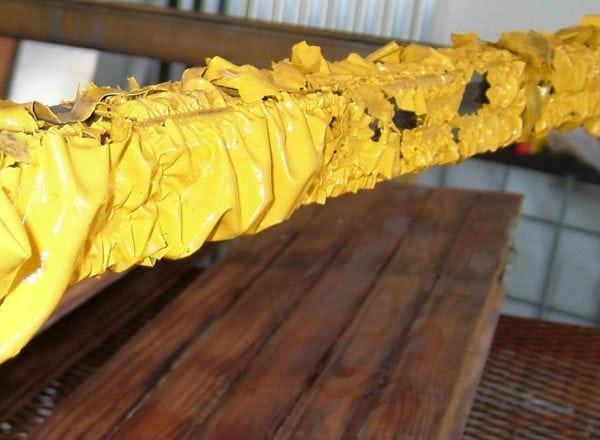
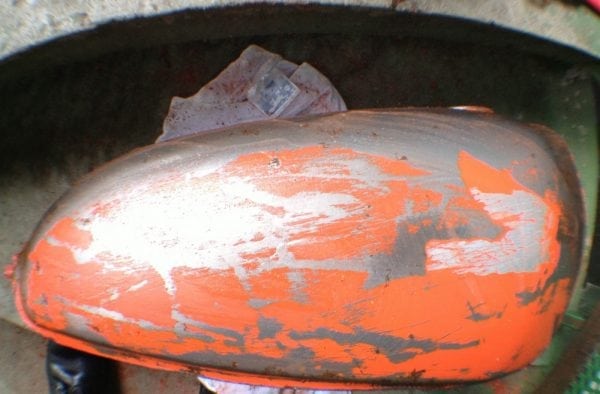
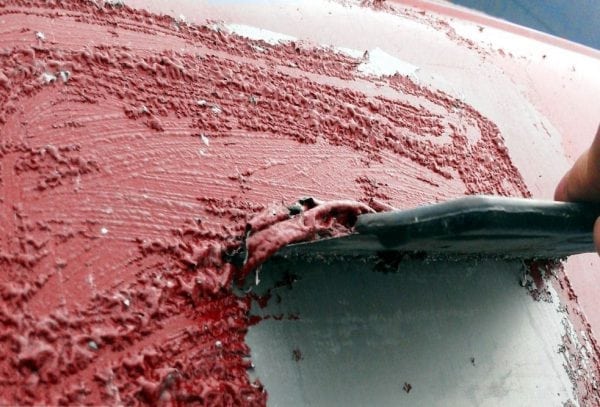
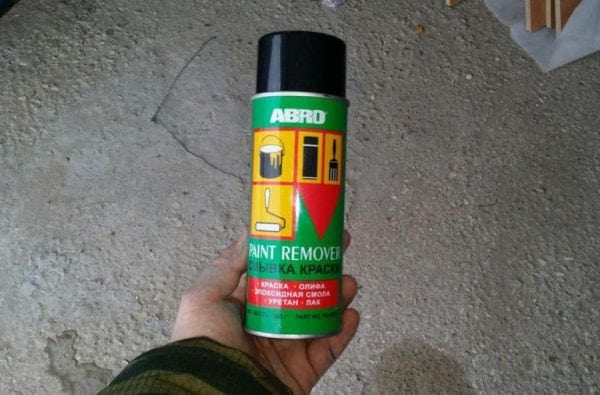
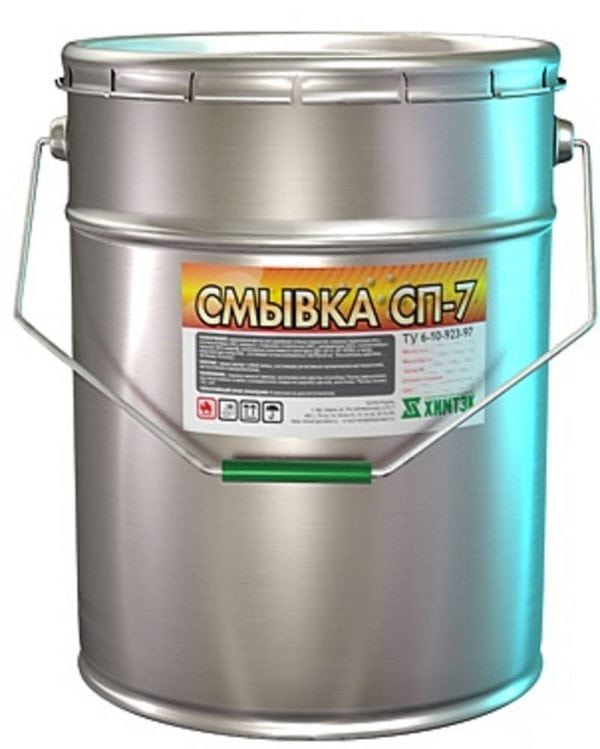




Hello, it seems to me that there is a tool much more effective than yours, it is called PaintNo. It is in liquid form, it is enough to spray it and wait 8 minutes, the paint will slide off